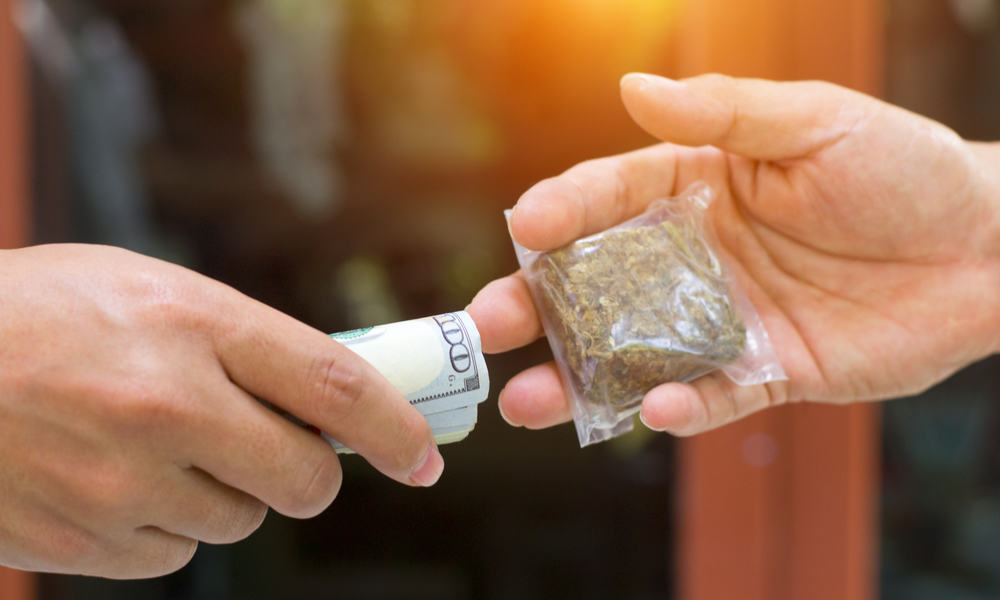One of the most common arguments for cannabis prohibition is a microeconomic one. The idea is that making cannabis illegal makes it more expensive, which means less people can afford to use it, which means the harmful effects of cannabis use are minimised. The logic is that people won’t be able to afford to harm themselves. As this article will show, this argument, common though it is, is mistaken.
If one assumes that cannabis use is inherently harmful, then one appears to have a clear-cut case for reducing the amount of suffering in the world by making it illegal (that cannabis is not inherently harmful is another argument, and will not be considered here). Making it illegal means that only the black market is able to supply it, which means that the end user has to pay a risk premium that takes into account the cost of Police harassment of the cannabis grower, and the inefficiencies that this harassment introduces into the growing process.
This risk premium makes cannabis more expensive, because the end user has to pay for all of the product confiscated by Police, or stolen by other criminal actors, or which was never grown because the size of the grow room was limited by the need to keep it clandestine. All of these factors serve to drive the price of cannabis up, which – according to the law of supply and demand – serves to reduce cannabis use.
The mathematics checks out. However, the core economic argument that cannabis prohibition reduces harm by disincentivising people from buying cannabis falls down, for a number of reasons.
It is true that prices fall sharply when cannabis becomes legal. The average price of an ounce in Colorado is NZD259, which means that it has fallen almost by half since legalisation took place. Websites that track the price of cannabis across various American states show that the price has fallen as low as NZD100 an ounce in places like Washington, where it is both legal and where the ability to supply is relatively unconstrained.
It isn’t true that this fall in prices leads to more use. Surveys in Washington have found that teen rates of cannabis use remained the same after cannabis legalisation. It is also noteworthy that teen rates of cannabis use in Holland are unremarkable in any sense. These surveys reveal that cannabis prohibition does not deter use.
In any case, the most important question to be asked about the high prices of cannabis caused by prohibition is this: who is getting all the money? In the same way that alcohol prohibition made Al Capone and his fellow Chicago gangsters rich, so too does cannabis prohibition funnel consumer wealth into the hands of the black market. This inevitably means criminal gangs, most of whom are deeply unpleasant people who are using the money to fund enterprises that genuinely do cause mass human suffering.
Once criminal gangs start getting involved in the cannabis trade, it means that there is going to be a lot more violence than if they weren’t involved. The black market means fighting for drug turf, which means intimidating other members of the black market away from certain territories through violence and the threat of violence. It means murders, kidnappings, gun violence, and all manner of other low-rent behaviours that lower everyone’s quality of life.
High cannabis prices incentivise all of this. The higher the cannabis prices are, the stronger the pull of the black market for cannabis on the various shady operators out there. Not only that, but the higher the stakes, the more ruthlessly people are willing to behave in order to secure a share of the profits. No-one is going to kill anyone else over the right to sell cannabis for $75 an ounce.
So the fact is that, in the final analysis, the economic equation balances out. The higher the price of cannabis, the lower the demand, true – but the higher the price, the higher the incentive to get into the black market opportunities for cannabis. If you are a criminal, and you don’t want to work, then growing some cannabis to sell to 15-year olds at $400 an ounce seems like an attractive proposition. If those 15-year olds are happy to wait until they’re 18 to buy it legally at $150 an ounce, well then you’re shit out of luck.
Cheap, legal cannabis would take a large slice of the black market, and render all criminal action in that slice uneconomic. This has several advantages, the foremost of which is that criminals can’t make as much money out of cannabis as before and therefore do not dominate the market. Another advantage is that people will be consuming a much higher grade of cannabis once it’s grown by professional horticulturalists and not gang members, and they will be able to do so more safely.
Cannabis ought to be made legal in order to disincentivise criminal actors from moving into the black market for it. Cheap, mass-produced, high-quality cannabis will take away the profit from what is currently a black market enterprise, which will have the effect of removing most of the criminal element from the cannabis trade. This will have the overall effect of reducing crime and suffering, because the criminal element causes more suffering than is prevented by cannabis being too expensive for some people to harm themselves with.
*
This article is an excerpt from The Case For Cannabis Law Reform, compiled by Vince McLeod and due for release by VJM Publishing in the summer of 2018/19.

